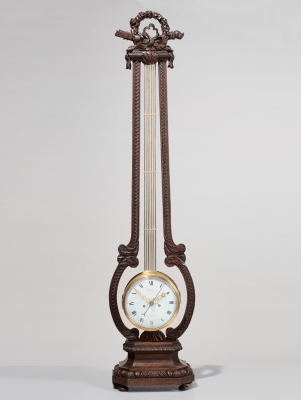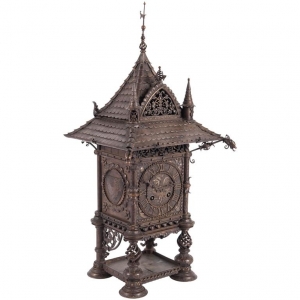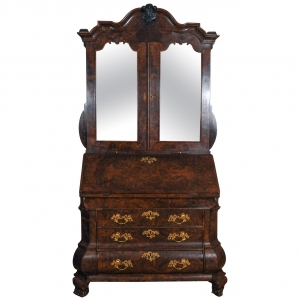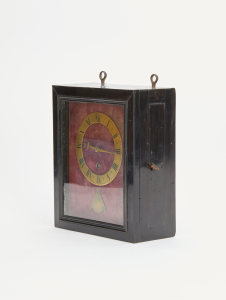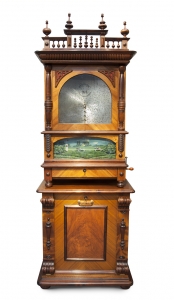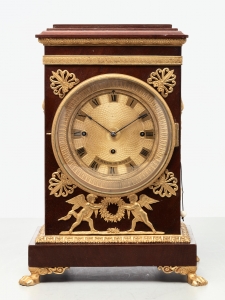Janvier was born on 1st July 1751 at Saint-Claude, and trained under his father, a clockmaker named Claude-Etienne. At Saint-Claude Janvier received lessons in mathematics, astronomy and the humanities from the Abbé Tournier. Then in 1768 at the age of 16 he presented an astronomical sphere to the Académie de Besançon (he later became a member of same academy as well as that of Rouen and others).
Janvier was appointed Horloger Mécanicien de Monsieur frère du Roi in 1783. When in 1784 Janvier was presented to Louis XVI by the latter’s brother the comte de Provence, the king was so impressed with the clockmaker’s work that he promptly acquired two of his planetary clocks. He also incorporated Janvier into his services and installed him at the Hôtel des Menus-Plaisirs du Roi, where he remained until moving to the Louvre in 1795. Once installed in the king’s services, Janvier bore the title Horloger Mécanicien du Roi and later with the restoration of the Bourbons was appointed Horloger Ordinaire du Roi. As royal clockmaker he supplied a clock to the Ecole de Chant at the Menus-Plaisirs, a great planetary clock acquired by Louis XVI in 1789 and a “geographical” clock. Other masterpieces included his great astronomical clock with Copernican sphère mouvante, begun in 1789 and finished 1801, which was awarded a gold medal at the Exposition des Produits de l’Industrie, 1801.
During the Revolution Janvier, like the other royal clockmaker Robert Robin was imprisoned though in 1793 he worked for the new government as a member of the jury responsible for inquiries concerning the new Republican time. Though Janvier never enjoyed success as an official clockmaker under Napoleon’s rule he did however continue to produce a number of highly sophisticated clocks, which were widely acclaimed both at home and abroad. From 1800 up until his death on 23rd September 1835 he lived at the Collège des Quatre Nations (today the l’Institut de France) where he established a clock making school. His pupils included Zacharie Raingo and Paul Garnier, founder of the Paris carriage clock industry. (Source: https://www.lapendulerie.com/artistdetails/235951/antide-janvier#)
An important and exceptional large Oscillating Clock by A Janvier, circa 1780
- Title
- An important and exceptional large Oscillating Clock by A Janvier, circa 1780
- Description
-
The elaborately carved walnut case stands 155cm from the octagonal base and is topped by a foliage wreath. The imposing size and great quality make this an exceptional clock. The fine woodcarvings are unusually to be seen on both sides of the case, suggesting that this clock was intended as the centrepiece of a room, or to be placed in front of a mirror. The movement hangs on a compensated grid pendulum, mounted to a gilded drum with gilded bezels on the front and rear and functions as the pendulum. The oscillating count wheel striking movement with central sweep seconds knife edge suspension and pin-wheel escapement. The enamel dial with Roman numerals and Arabic numbers for quarters, half hour and hour, signed Janvier a Paris. Beautiful pierced hands and in the hour hand a indicator of the days of the week.
- Origin
- France
- Period
- Louis XVI
- Signature
- Antide Janvier
- Dimensions
- 155 x 35 x 17 cm
- Price
- Price on request
- Share
